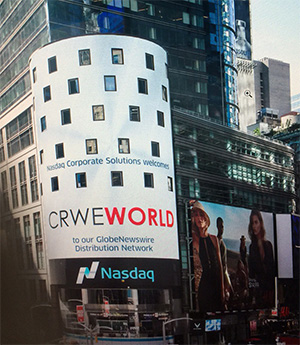Robert Bilus Advances Ergonomics and Workplace Safety with Industrial Engineering Solutions
TAMPA, FL /ACCESS Newswire / February 24, 2025 /Robert Bilus, an accomplished industrial engineer and proud alumnus of the University of Florida, is leading innovative efforts in the field of workplace ergonomics and safety. With a strong foundation in industrial engineering, Robert Bilus is dedicated to improving work environments across various industries, ensuring the health and safety of employees while also enhancing operational efficiency. His efforts are helping to shape the future of workplace safety by combining cutting-edge industrial engineering principles with a deep understanding of human factors.
Advancing Workplace Safety Through Ergonomics
Workplace safety has long been a priority for organizations, but in recent years, the growing awareness of the impact of ergonomics has changed the conversation. According to Robert Bilus, "Ergonomics is about more than just comfort - it 's about optimizing workspaces and processes to protect the well-being of employees while increasing productivity." Bilus adds that incorporating ergonomic principles into the design of workstations and workflows can significantly reduce the risk of musculoskeletal injuries, which are among the most common workplace-related health issues.
Bilus 's approach to ergonomics begins with a comprehensive assessment of workplace environments. "Every workspace has its own set of challenges, whether it 's a manufacturing floor, an office setting, or a construction site," Bilus explains. "By applying the principles of industrial engineering, we can identify inefficiencies and potential safety hazards, creating solutions that are tailored to the specific needs of the workforce."
Through detailed analysis and data-driven insights, Robert Bilus 's work emphasizes the importance of proper workstation design, ergonomic tools, and workstation layout. His efforts have led to notable improvements in reducing workplace injuries and improving overall job satisfaction for employees. By leveraging his expertise, businesses are seeing fewer workplace injuries, which not only enhance employee health but also lead to lower workers ' compensation costs and reduced absenteeism.
Human-Centered Design: Reducing Strain and Boosting Productivity
In his work, Bilus focuses on human-centered design, which is grounded in the understanding of how workers interact with their tools, tasks, and environment. He believes that safety and productivity are not mutually exclusive; rather, when ergonomics are prioritized, they can go hand in hand. "When employees are comfortable and their work environment is designed to support their physical needs, they are more engaged, less fatigued, and ultimately more productive," Bilus notes.
By applying ergonomic principles, Bilus has worked with companies to implement key strategies like adjustable desks, ergonomic chairs, and optimized tool placement. These changes may seem small, but they can have a significant impact on reducing repetitive strain injuries, back problems, and other work-related health issues. Moreover, these adjustments create a work environment where employees are empowered to perform their tasks more efficiently and with less physical stress.
Bilus 's work also extends to the integration of technology, including wearable devices that monitor posture and physical strain. These innovations are helping employees and managers track and improve their ergonomics in real time. "The future of workplace safety is not just about making adjustments after the fact," Bilus adds. "We 're now able to use real-time data to prevent injuries before they happen, which is a huge leap forward for the industry."
A Holistic Approach to Safety: Beyond Ergonomics
While ergonomics plays a vital role in workplace safety, Robert Bilus 's approach takes a more holistic view of employee well-being. He advocates for a safety-first mindset that encompasses not only physical health but also mental and emotional well-being. "Creating a safe workplace goes beyond physical design - it 's about fostering a culture where safety is ingrained in every aspect of the organization," Bilus says.
This comprehensive approach includes stress management techniques, mental health support programs, and fostering open communication between employees and management. By addressing both physical and psychological factors, Bilus ensures that workplace safety becomes an integrated part of an organization 's culture, leading to better overall outcomes.
The Role of Industrial Engineering in Workplace Safety
As a member of the Golden Key International Honour Society and with an extensive background in industrial engineering, Robert Bilus has dedicated his career to finding innovative solutions to the challenges that organizations face in maintaining a safe and productive workforce. He believes that the key to successful workplace safety initiatives lies in applying industrial engineering principles such as systems analysis, process optimization, and continuous improvement.
"Industrial engineering allows us to see the bigger picture," says Bilus. "By analyzing processes, workflows, and human interactions, we can design systems that not only keep workers safe but also improve operational efficiency and reduce waste." Bilus has worked with companies across various industries to implement these strategies, tailoring each solution to the specific needs and challenges of the workplace.
Through his work, Robert Bilus has demonstrated how industrial engineering can be a game-changer in workplace safety. His dedication to ergonomics, worker health, and safety optimization has made a lasting impact on the industries he serves. As he continues to innovate in this space, Bilus remains committed to helping companies build safer, more productive environments for their employees.
CONTACT:
https://robertbilus.com
Email: bilus@robertbilus.com
SOURCE: Robert Bilus
View the original press release on ACCESS Newswire
© 2025 ACCESS Newswire. All Rights Reserved.



















